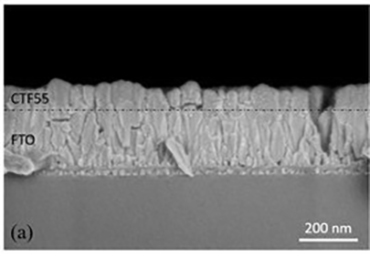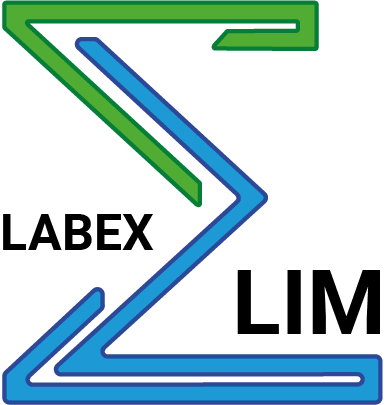
[Publication] Electrical and Optical Properties of CaTi1−yFeyO3−δ Perovskite Films as Interlayers for Optoelectronic Applications
The development of perovskite oxides is a flagship area of expertise at Limoges, for multiple innovative applications. However, the use of perovskite oxides for optoelectronic components, such as photovoltaic cells, has remained relatively underdeveloped until now. The combined expertise of IRCER (materials development) and XLIM (integration of materials into optoelectronic components) has recently enabled them to be used as interface layers in third-generation solar cells, which are themselves based on a halogenated (non-oxide) perovskite active layer.
A solar cell is an assembly of layers that efficiently converts light energy into electricity. The layers are structured in such a way as to enable the photo-generated charges in the active layer to be extracted (by absorbing light) via the use of specific interface layers placed between the electrodes and the absorber, which enable the efficient drainage of carriers and the generation of electric current.
The special feature of perovskite solar cells is that they use a halogenated perovskite as the active layer, and they currently achieve power conversion efficiencies of over 26%, making them competitive with silicon. In this particular case, it makes sense to replace the interface layers with perovskite oxides, which have the advantage of having the same structure as the active layer, which favours interactions between the two materials. While there are several families of perovskites, the research work between IRCER and XLIM has focused on a family called “CaTi1-yFey O3-δ” because of its good transparency (needed to let light pass through to the active layer) and good electrical conductivity (needed to extract a large current).
Indeed, CaTi1-yFey O3-δ perovskite oxide films are promising candidates for the interface layers of solar cells, but also of light-emitting diodes (LEDs), as they are stable and robust, which is an asset for the lifetime of the devices. The impact of atomic substitutions of titanium by iron on the electrical and optical properties of CaTi0.5Fe0.5O3-δ perovskite films has been studied and has made it possible to establish the best compromise between a high transmission coefficient and an electrical conductivity appropriate for the application.
This work is currently being carried out as part of Ceren Yildirim’s thesis, co-funded by LABEX ∑-LIM and the Nouvelle-Aquitaine Region, with the main challenge of finalising the integration into a device and thus achieving a proof of concept. This work has many potential applications, such as modulating the physical properties of the oxides via their composition, or combining these interfaces with new light-absorbing or light-emitting materials.
Figure. Scanning electron microscopy (SEM) images of a cross-section of a CaTi1-yFey O3-δ-type perovskite oxide thin film, grown by pulsed laser deposition. The deposition, 100nm thick, is made on a transparent conductive layer of fluorine-doped tin oxide (FTO, 200nm thick), used as a transparent electrode.
About the publication
Journal: Materials, 2022
Volume: 15
Number: 6533
Article: Electrical and Optical Properties of CaTi1−yFeyO3−δ Perovskite Films as Interlayers for Optoelectronic Applications
Authors: by Ceren Yildirim, Fabien Devoize, Pierre-Marie Geffroy, Frédéric Dumas-Bouchiat, Johann Bouclé and Sylvain Vedraine
Link: https://www.mdpi.com/1996-1944/15/19/6533

